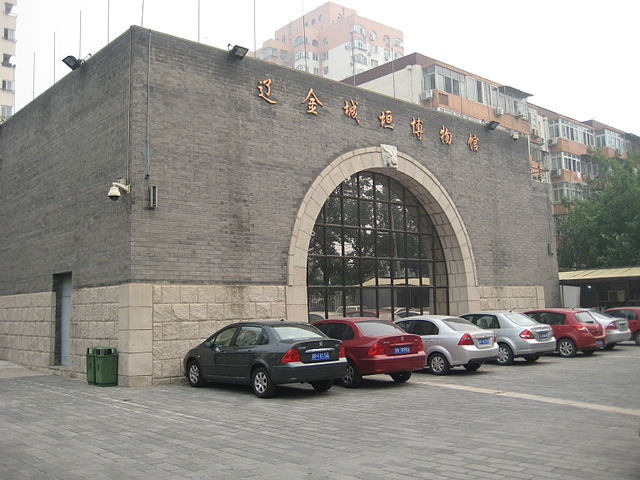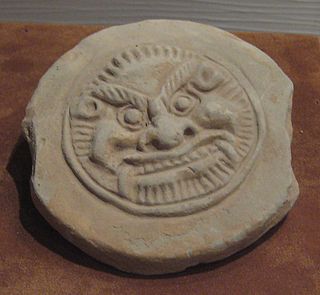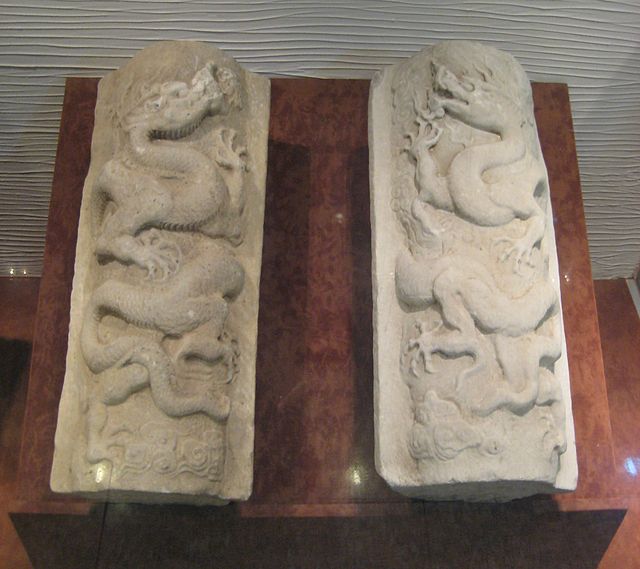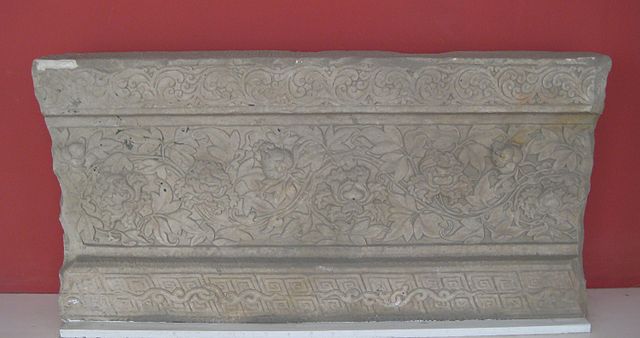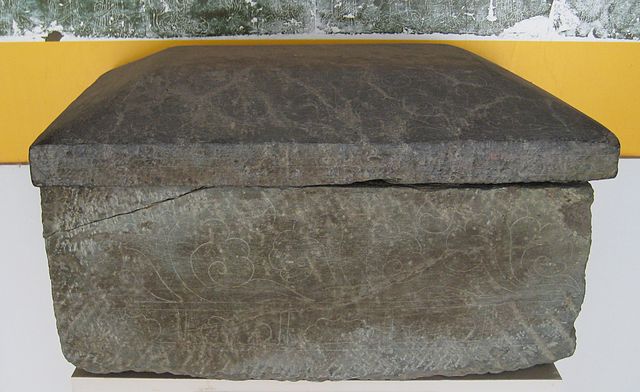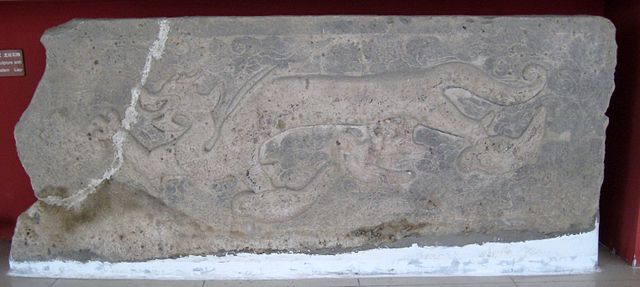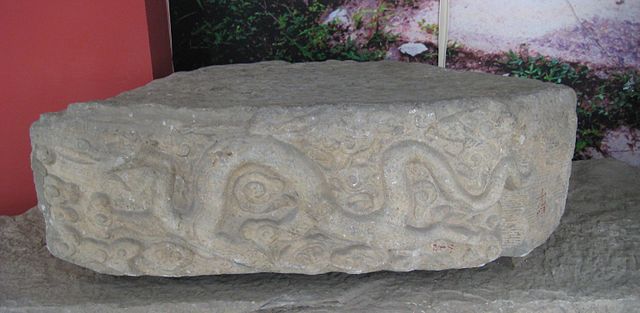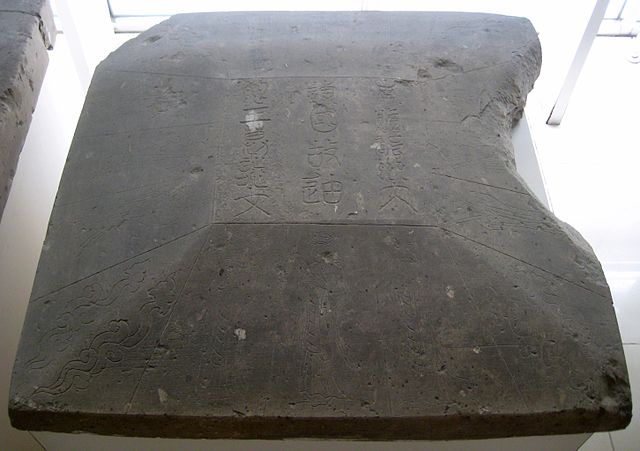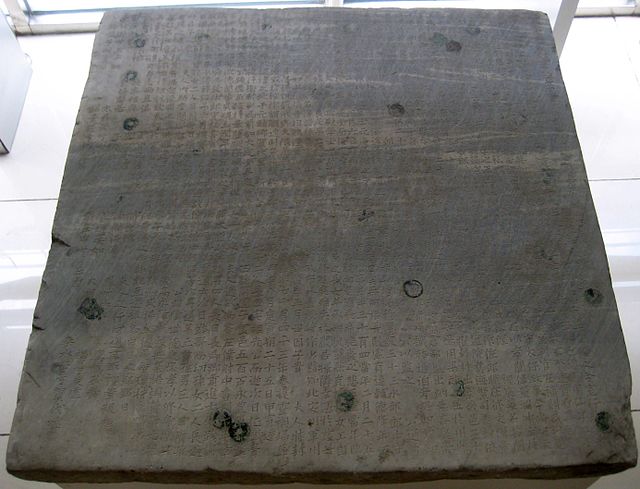Diary of a Rambling Antiquarian
Friday, 5 August 2011
Liao and Jin City Wall Museum
We are flying to Guangzhou this afternoon, then on to Hong Kong, and returning to London on Sunday after two and a half weeks in China (Hong Kong – Guangzhou – Nanning – Liuzhou – Beijing – Guangzhou – Hong Kong). Although the trip has mostly been about visiting friends and family, and I have had little opportunity to explore places of antiquarian interest, I am pleased to have been able to visit several museums with rich collections of historic objects [Museum of the Mausoleum of the Nanyue King, Museum of the Guangxi Zhuang Autonomous Region and National Museum of China]. Wednesday was the high point of the trip for me, when I visited the Cloud Platform at Juyongguan and saw Buddhist inscriptions in six scripts, including my favourite Phags-pa and Tangut scripts. It was a disappointment to me when I visited the National Museum of China on Tuesday that there were no objects on display with inscriptions in either of the two Khitan scripts, so before we leave this afternoon I want to visit the Liao and Jin City Wall Museum (遼金城垣博物館) which I've heard has a Liao dynasty memorial tablet inscribed in the Khitan small script.
The museum is located on the site of a water gate through the south city wall of the city during the Liao (907–1125) and Jin (1115–1234) dynasties, when Beijing was one of the five capitals (the Southern Capital during the Liao dynasty, and the Central Metropolis during the Jin dynasty), in what is now a rather out of the way location that cannot be reached directly by underground. I do all my packing and leave our hotel at Chongwenmen at 8.00 am so that I can get to the museum by 9.00 am when it opens. It is only a single change on the underground to Beijing South Railway Station, and from there I think it should only be a ten or fifteen minutes walk. The hardest part was trying to get out of the station through the concrete maze of roads and deadends. Eventually I hit upon the main road and head south until I reach the concreted Liangshui River, at which point I head west along a quiet lane that runs along the north bank of the river. It takes much longer than I expected, and I am starting to worry that I have gone past the museum, when there it is on my righthand side, incongruous amongst the shabby appartment blocks rising all around it.
Liao and Jin City Wall Museum
I go in, but there is no-one at the reception desk, and I appear to be the only visitor at this time. How many tourists will ever think to visit this out-of-the-way museum I wonder? Perhaps I will be the only visitor here today. I follow the signposts downstairs into the basement of the building where the excavation of the water gate has been preserved. It is very gloomy, and frankly not very interesting. I am unable to take any decent photos, and return to the ground floor where there is a single exhibition hall of mostly Liao and Jin dynasty objects found in Beijing and elsewhere. Not a first class collection, but worth visiting if you are interested in Liao and Jin history. However, the lighting is bad and I am frustrated by my camera's inability to take pictures in focus. I take seven photos of a couple of Jin dynasty Go stones that were found in the sixth layer of the water gate excavations, being somewhat interested in the history of the game of Go, but none of them are in focus. I also fail to successfully photograph a Han dynasty pottery funerary tower and a Jin dynasty memorial stele. In the end I only manage to get half decent pictures of a very few objects.
Jin dynasty grey pottery eaves tile
Jin dynasty green-glazed roof tile end
Jin dynasty double fish mirror
(Double fish mirrors are a speciality of the Jin dynasty,
and I took a picture of a giant double fish bronze mirror
at the National Museum of China on Tuesday)
Jin dynasty dragon columns
I spend half an hour wandering around the exhibition hall, but there is no sign of any Khitan memorial stones. Disheartened, I ask the receptionist (who has now arrived) and to my surprise she guides me out of the museum building, and around the back where there is a separate little building, the Hall of Carved Stones, where the museum's collection of memorial stones and large masonry is housed.
Jin dynasty stone peony panel
Jin dynasty stone feretory
Liao dynasty stone dragon sculpture
Liao dynasty stone tiger sculpture
Yuan dynasty stonework from the Dongbuya bridge
At the far end is the Small Khitan memorial that I had been hoping to see—not quite in the wild, but perfect all the same. There is lots of natural light in the Hall of Carved Stones, which is good, but unfortunately the bright sunlight is shining down onto the memorial tablets in Chinese and Khitan, which are all placed in front of the sheet glass windows. This means that the top part of the Khitan inscription is illegible when photographed. This memorial tablet and its cover were excavated from the tomb of Yelü Dilie 耶律迪烈 (1026–1092) at Gahaitu Township, Jarud Banner, Inner Mongolia in 1995. It has one of the longest known Khitan small script inscriptions, running for 32 columns (right-to-left) on the tablet, and a further nine columns of text continuing along the underside of the cover (in total about 1,740 characters). The stone cover for the memorial tablet has a title inscription in three lines in Chinese seal script characters, and is decorated on the four sides with twelve figures representing the twelve zodiacal animals.
Liao dynasty memorial tablet in Khitan for Yelü Dilie (1026–1092)
Stone cover for the memorial tablet for Yelü Dilie
南瞻部洲大
遼國故迪
烈王墓誌文
Liao dynasty memorial tablet in Chinese for Li Jicheng 李繼成 (d. 1005) and his wife
I walk back to the underground station, elated at having seen and touched my first Khitan memorial tablet.
Postscript: I return to Beijing in December 2013 and September 2017, and both times I make time to go to the Liao and Jin City Wall Museum in the hope of taking a better photograph of the Khitan epitaph. Both time the museum is "closed for repairs", and I am unable to gain access.
Beijing | Khitan | Liao dynasty | Museums
Index of Rambling Antiquarian Blog Posts
Rambling Antiquarian on Google Maps
